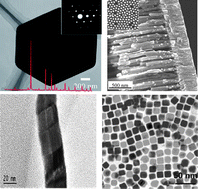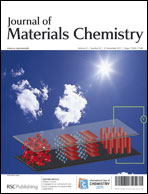Significant research effort has recently gone into the synthesis of thermoelectric nanomaterials through different chemical approaches since nanomaterials chemistry became a promising strategy for improving thermoelectric performance. Different thermoelectric nanocrystals, especially PbTe, Bi2Te3 and CoSb3, with various compositions and morphologies have been successfully prepared by solvo/hydrothermal, electrochemical, and ligand-based synthesis methods. Such nanoscale materials show not only substantial reduction in thermal conductivity due to increased phonon scattering at nanoscale grain boundaries and lower densities of phonon states but possibly also an enhancement in thermopower due to electronic quantum size effects. More recently, the notoriously low power factors of thermoelectric nanomaterials prepared by wet chemistry have been significantly improved by using an increasingly cross-disciplinary approach towards the bottom-up synthesis that combines expertise from chemistry, physics, and materials engineering. In this review, we discuss the recent progress and current challenges of preparing thermoelectric nanomaterials with solution-based chemistry approaches.

You have access to this article
 Please wait while we load your content...
Something went wrong. Try again?
Please wait while we load your content...
Something went wrong. Try again?


 Please wait while we load your content...
Please wait while we load your content...